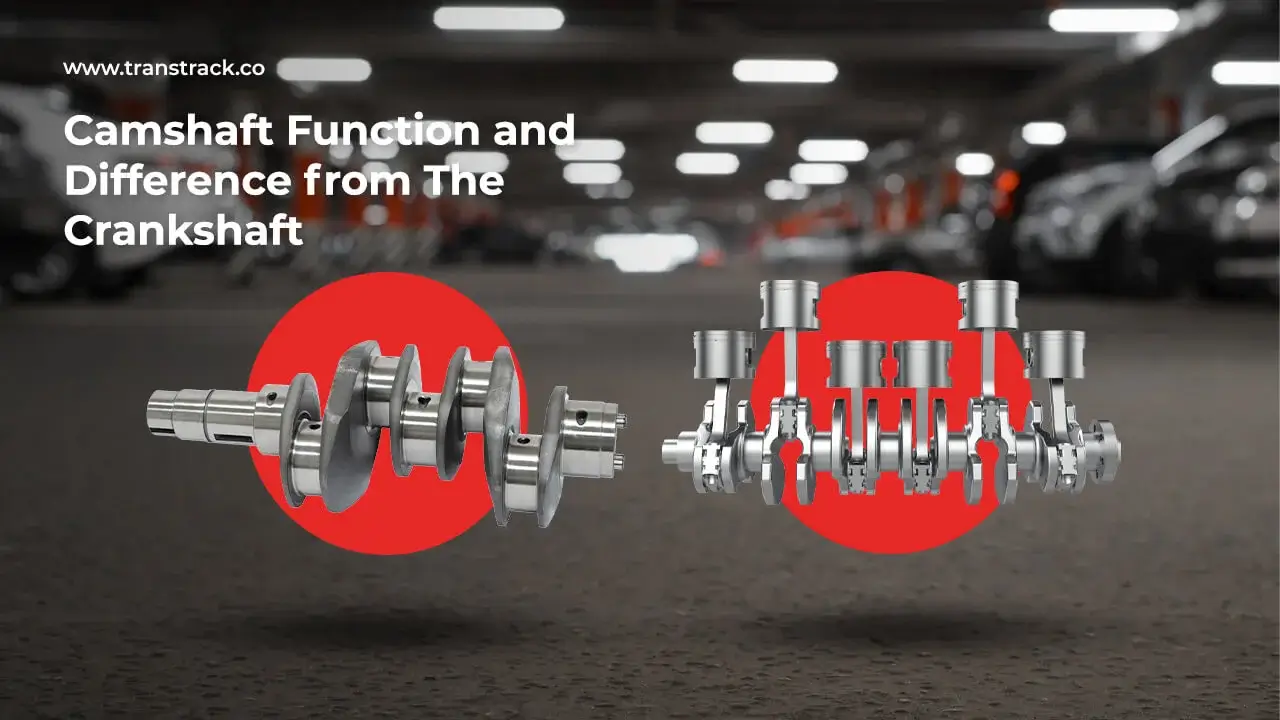Camshaft Function and Difference from The Crankshaft
Posted on November 30, 2023 by Nur Wachda Mihmidati

In the world of vehicle engines, the camshaft is a component that is often referred to as the “brain” that regulates the engine’s heartbeat. Although often forgotten amongst the more well-known parts, such as the engine, transmission, or electrical system, the camshaft plays a very important role in keeping your vehicle’s engine in optimal condition.
The camshaft is not just a rotating shaft. It is the component that controls the opening and closing of valves, regulates the flow of air and fuel into the combustion chamber, and ensures that all engine components move in sync. This camshaft function explained TransTRACK article will take an in-depth look at the function of the camshaft in a vehicle engine and why understanding its important role is crucial for reliable engine maintenance and performance.
What is the Camshaft Function in a Car
The camshaft is an important component in a car engine that has several key functions. Among the choices you mentioned, here are the main functions of the camshaft in a car:
Camshaft Function: Regulates Valve Openings According to Firing Order
The camshaft drives the valves in the engine to open and close according to the firing order. This is important to regulate the flow of air and fuel into the combustion chamber and exhaust gases out of the engine.
Camshaft Function: Sensor Container for Detecting Turns
Camshafts often have position sensors that are used to detect the rotation or position of the crankshaft and send this information to the engine control system (ECU) to optimize combustion and engine performance.
Camshaft Function: Fuel Pump Drive
In some engines, the camshaft can also be used to drive the fuel pump, especially in diesel engines. This helps in regulating the fuel supply to the engine.
Camshaft Function: Turns the Distributor Shaft
In engines with conventional ignition systems that use distributors, the camshaft can also be used to rotate the distributor so as to set the ignition timing.
Camshaft Function: Improves fuel efficiency
By precisely controlling the opening and closing of the valves, the camshaft can help improve the engine’s fuel efficiency by ensuring optimal combustion.
Camshaft Function: Extends Engine Life
A well-designed camshaft made from quality materials can help extend engine life by reducing excessive friction and wear on engine components.
Camshaft Function: Ensures optimal engine performance
The camshaft plays a role in controlling various aspects of engine performance, including combustion, torque and power. By doing this, the camshaft helps to ensure optimal engine performance.
Thus, the camshaft has a key role in the operation of a car engine and affects many aspects of engine performance, including efficiency, power and engine life.
Difference between Camshaft and Crankshaft
The camshaft and crankshaft are two very important components in a vehicle engine, and they both have different roles in the engine’s operating cycle. Here are the main differences between the camshaft and crankshaft:
Main Functions
Camshaft
The camshaft is the component responsible for regulating the opening and closing of the valves in the engine. It ensures that the flow of air and fuel into the combustion chamber and exhaust gases out of the engine occurs at the right time according to the combustion sequence.
Crankshaft
The crankshaft is a component that converts the linear motion of the pistons into the rotational motion used to drive the wheels of a car. It converts the up-and-down motion of the pistons into a rotary motion that drives the wheels of the car.
Location and Orientation
- The camshaft is usually located in the engine block above the cylinder head (overhead camshaft) or in the engine block (inline camshaft). The camshaft rotates on its own axis.
- The crankshaft is located at the bottom of the engine and rotates parallel to the direction of travel of the car. The crankshaft is connected to the transmission shaft that sends power to the wheels.
Movement
- The camshaft has a rotary motion that controls the opening and closing of the valves according to the lobes on the camshaft.
- The crankshaft has a rotational motion that converts the up-and-down motion of the piston into a rotary motion that drives the wheels of the car.
Relationship
- The camshaft and crankshaft are two separate components in an engine, and they work together to regulate the overall engine operation.
- The crankshaft receives power from the piston through the connecting rod, while the camshaft is driven by the crankshaft through the timing belt or chain.
Role in Combustion
- The camshaft regulates the opening and closing of valves to control the flow of air and fuel into the combustion chamber and exhaust gases out of the engine.
- The crankshaft converts the up-and-down motion of the piston into rotational motion that drives the transmission shaft and wheels of the car.
These two components are crucial in the operation of a vehicle’s engine, and they must function properly for the engine to run efficiently. The camshaft controls the combustion process, while the crankshaft generates the power used to move the vehicle.
The camshaft is a very important component in a vehicle’s engine, and a good understanding of its function can help you care for and maintain the performance of your engine. However, to ensure that the camshaft and other engine components operate in optimal condition, you also need to pay attention to the overall care and maintenance of the vehicle.
In the modern era, vehicle care and maintenance is increasingly aided by technology. One way to ensure the health and performance of your vehicle is to use a vehicle maintenance system like TransTRACK’s “Vehicle Maintenance System”. This system allows you to monitor maintenance schedules, reminds you of oil changes, filters, or other routine maintenance, and provides reports on the condition of your vehicle’s engine.
Using this system, you can:
- Optimize your vehicle’s performance with timely maintenance.
- Reduce the risk of machine breakdowns and costly repairs.
- Improves fuel efficiency and vehicle engine life.
- Improve driving safety and comfort by maintaining good vehicle condition.
So, if you want to keep your camshaft and other engine components in top condition, as well as ensure your vehicle operates properly, consider using a vehicle maintenance system such as TransTRACK’s Vehicle Maintenance System. By doing so, you can efficiently maintain your vehicle and avoid problems that could disrupt your trip.
Recent Post
Topic :
 Bahasa Indonesia
Bahasa Indonesia









